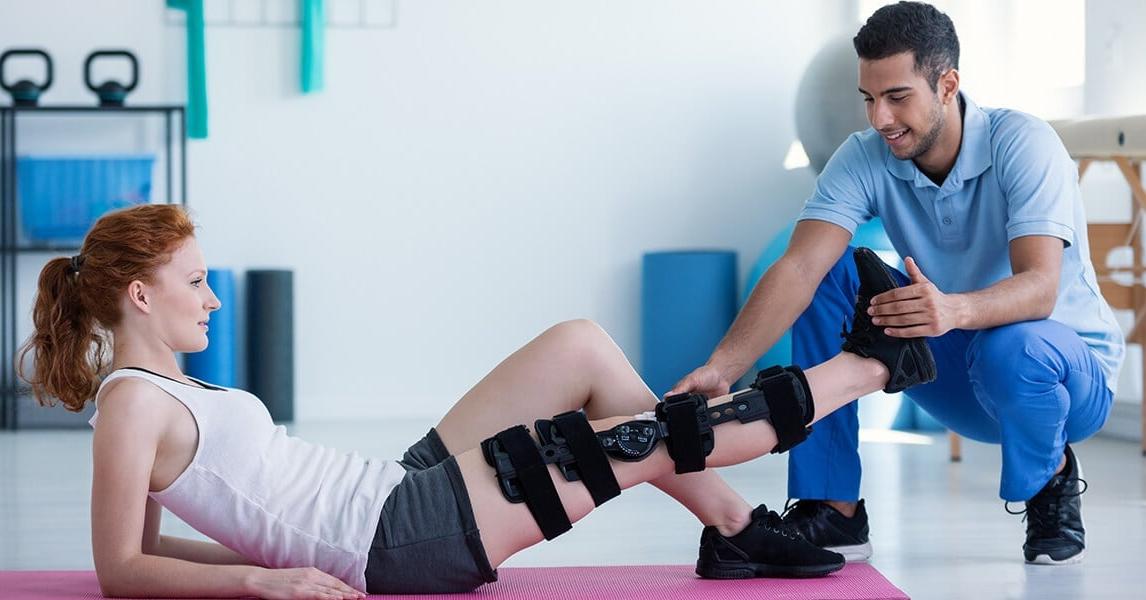Postoperative physical therapy is a crucial aspect of the recovery process for those who have undergone surgical procedures. It is a specialized form of rehabilitation that aims to restore function, mobility, and strength while reducing pain and complications after surgery.
Explore the significance of postoperative physical therapy, its objectives, the common techniques used. For post-operative physical therapy in Scottsdale, reach out to our team at FYZICAL Therapy & Balance Centers.
The Importance Of Postoperative Physical Therapy
While often necessary to treat various medical conditions, surgery can leave the body weakened, immobile, and susceptible to complications. Postoperative physical therapy plays a pivotal role in addressing these issues, aiding in the patient’s return to optimal health and function. By tailoring treatment plans to the specific needs of each individual, physical therapists can help patients regain their independence and quality of life.
Objectives Of Postoperative Physical Therapy
The main objectives of postoperative physical therapy include:
- Pain Management: Pain is a common postoperative concern. Physical therapists employ various modalities, such as heat, ice, ultrasound, and manual techniques, to alleviate pain and discomfort. These measures also facilitate the body’s natural healing process.
- Restoration of Mobility: After surgery, mobility may be limited due to muscle weakness, scar tissue, or joint stiffness. Physical therapy utilizes stretching and range-of-motion exercises to enhance mobility and flexibility, promoting a faster return to regular activities.
- Strengthening Muscles: Surgery can lead to muscle atrophy, which weakens the affected area. Physical therapists devise strength training exercises to target specific muscle groups, rebuilding strength and preventing further complications.
- Improving Balance and Coordination: Many surgical procedures can affect balance and coordination. Physical therapists implement exercises that challenge these abilities, reducing the risk of falls and enhancing overall stability.
- Scar Management: Surgical incisions result in scar tissue formation, which may restrict movement and cause discomfort. Through massage, stretching, and other techniques, physical therapists aim to minimize the impact of scar tissue on mobility and function.
Common Techniques in Postoperative Physical Therapy
Physical therapy in the postoperative period is a critical component of the recovery process for patients who have undergone surgical procedures. During this phase, the primary goal of physical therapy is to facilitate healing, restore function, and promote optimal mobility. After approval from the medical team, some of the common techniques physical therapists use include:
Manual Therapy
Physical therapists commonly use hands-on techniques, such as joint mobilization and soft tissue manipulation, to restore mobility and reduce pain in the body after surgery. Manual therapy is particularly effective in addressing joint stiffness and muscle tension.
Therapeutic Exercises
Tailored exercise programs are designed to address specific post-surgery needs. These may include stretching, resistance training, and functional movements that simulate real-life activities to promote a seamless return to daily routines.
Electrical Stimulation
Electrical modalities like transcutaneous electrical nerve stimulation (TENS) can be employed to manage pain and promote muscle contraction, aiding in muscle re-education and rehabilitation.
Gait Training
Patients may experience difficulty walking following certain surgeries. Physical therapists work on correcting gait abnormalities, ensuring a proper walking pattern is reestablished.
Aquatic Physical Therapy
Water-based exercises, performed in a pool, can be beneficial for patients with weight-bearing restrictions. Water reduces the impact on joints while providing resistance for muscle strengthening.
The Benefits Of Postoperative Physical Therapy
Physical therapy provides many benefits after surgery. These include:
- Faster Recovery: A structured physical therapy program can accelerate the recovery process, allowing patients to resume their daily activities sooner and reducing the risk of post-surgery complications.
- Pain Relief: By addressing pain through various therapeutic techniques, physical therapy can reduce the need for pain medications, minimizing the risk of dependency and side effects.
- Improved Functionality: Postoperative physical therapy helps patients regain functional independence, allowing them to perform everyday tasks with greater ease and confidence.
- Preventing Complications: Physical therapy can help prevent complications such as joint contractures, muscle weakness, and postural imbalances that may arise after surgery.
When To Start Physical Therapy After Surgery
Postoperative physical therapy can usually begin soon after the surgical intervention, often within the first 24 to 48 hours. The medical team is usually involved in the decision to start physical therapy to optimize timing and results.
The early focus of physical therapy is on pain management, swelling reduction, and preventing complications like blood clots and joint stiffness. Physical therapists use various techniques, including manual therapy, gentle exercises, and modalities like ice or heat therapy, to address these concerns.
As the patient progresses, the physical therapy program becomes more intensive, tailored to the individual’s specific needs and the type of surgery. Physical therapists will focus on strength and restoring balance, coordination, and proprioception to improve overall stability.
Recover Faster With Physical Therapy
Postoperative physical therapy is an integral part of the recovery process. Chat to FYZICAL Therapy & Balance Centers about our postoperative physical therapy services in Scottsdale, AZ.
